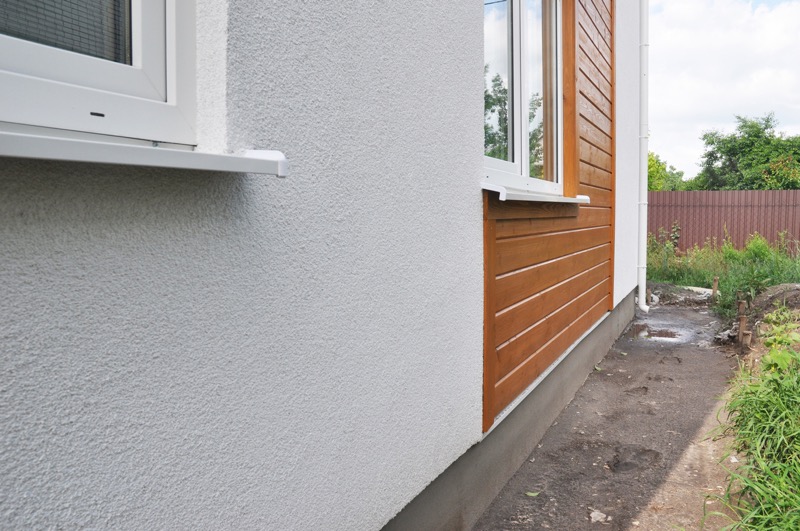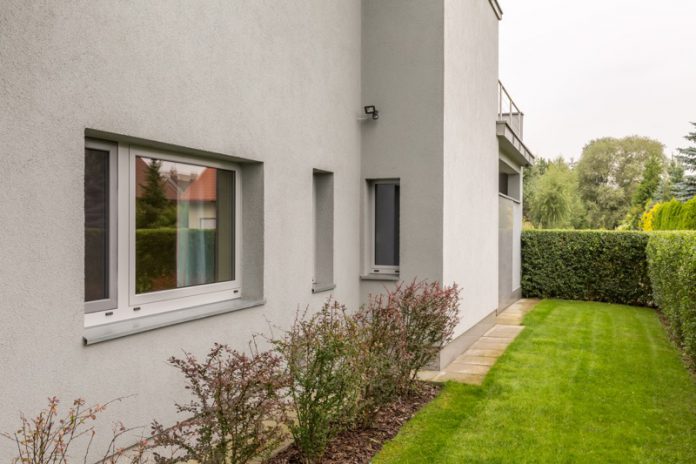If you want your home’s exterior to be beautiful and durable, there’s no better choice than stucco. It’s an excellent material that boosts your curb appeal (and therefore your property value) and protects your home from weathering, water damage, and other problems that can be a major headache to fix.
But there’s more than one type of stucco, and if you’re like most homeowners, you’ll want to know the difference between them to figure out which stucco is best for your home. In this article, we break down the differences between traditional and synthetic stucco so you can make an informed decision when selecting stucco materials.
Traditional Stucco
Traditional stucco, also known as Hard Coat stucco, is cement-based, hence the term hard coat. The base is usually made from cement, sand, and water, establishing a solid foundation to apply the finish coat over the top. The cement makes this stucco much heavier than its synthetic counterpart.
Durability
All stucco, including traditional stucco, is very durable. It’s resistant to fire, rot, mould, termites, water damage and weathering. But it’s not indestructible. Over time, small gaps like cracks and holes can lead to bigger problems if they’re not repaired quickly, especially if you live in an area with harsh weather conditions.

Cleaning & Maintenance
To keep your exterior looking good, you have to keep it clean. Cleaning traditional stucco can take a good chunk of time, but it’s simple to do, and you only need to do it around once per year. Avoid using power washers, though, because if there are gaps in the stucco, water will get in and could cause water damage.
Environmental Impact
Because traditional stucco is made from natural materials, is recyclable, makes your home more energy-efficient and lasts for many years, it’s quite the environmentally friendly siding. In terms of materials.
EIFS (Synthetic) Stucco
EIFS (Exterior Insulation and Finish System) stucco consists of thin layers of modified synthetic materials instead of cement. This means it’s much lighter than traditional stucco.
Durability
EIFS gets the edge when it comes to durability. It has most of the same resistance as traditional stucco, although it is slightly more susceptible to moisture absorption and damage. But its overall durability makes up for the difference in water resistance and then some. It’s even strong enough to handle hurricane-strength winds, as long as those winds aren’t bringing debris with it.
Cleaning & Maintenance
Washing dirt and grime off synthetic stucco is very similar to cleaning traditional stucco. Just make sure you check your EIFS warranty for cleaning specifications. You don’t want to get clean and beautiful siding at the expense of losing your warranty.
Environmental Impact
EIFS stucco materials aren’t recyclable like traditional stucco materials, but that doesn’t necessarily mean the overall environmental impact is worse. In fact, because stucco lasts such a long time, the better gauge for environmental friendliness is its energy efficiency. Since EIFS will keep your home more energy-efficient, it gets the edge in the environmental category.
Which is best?
Let’s add up the tally to see which stucco is best. EIFS is more durable; there’s no arguing that, and it keeps your home more energy-efficient, reducing your home’s environmental impact. When it comes to cleaning and maintenance, there is essentially a tie. So, overall, EIFS is generally considered to be the better stucco.
However, since it’s higher quality, it’s more expensive. That means EIFS is better in a vacuum but may not be the best choice for you when the cost is taken into account. Only you know which type of stucco is best for your home and if spending more on EIFS is worth it. But whichever one you choose, you’ll be getting a durable, stylish siding that protects your home and looks good too.















